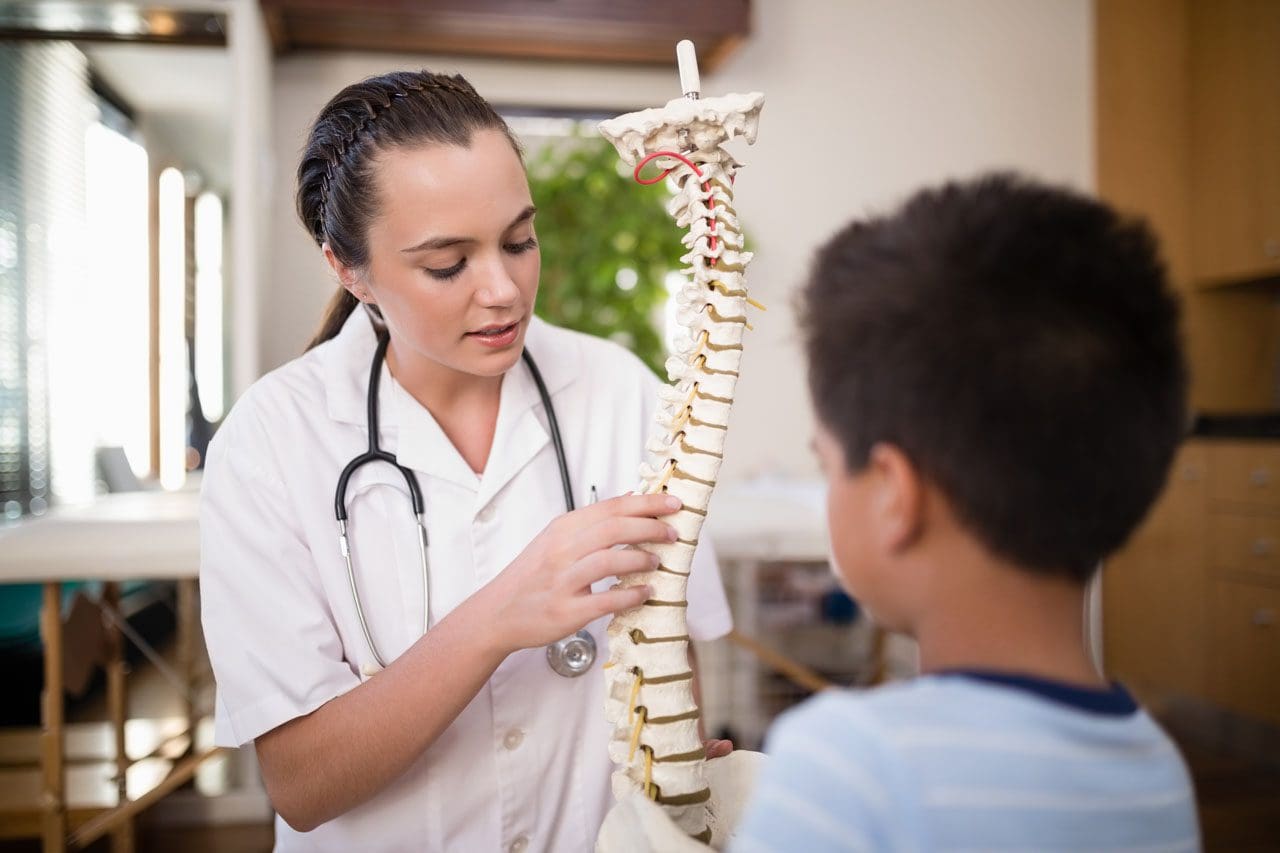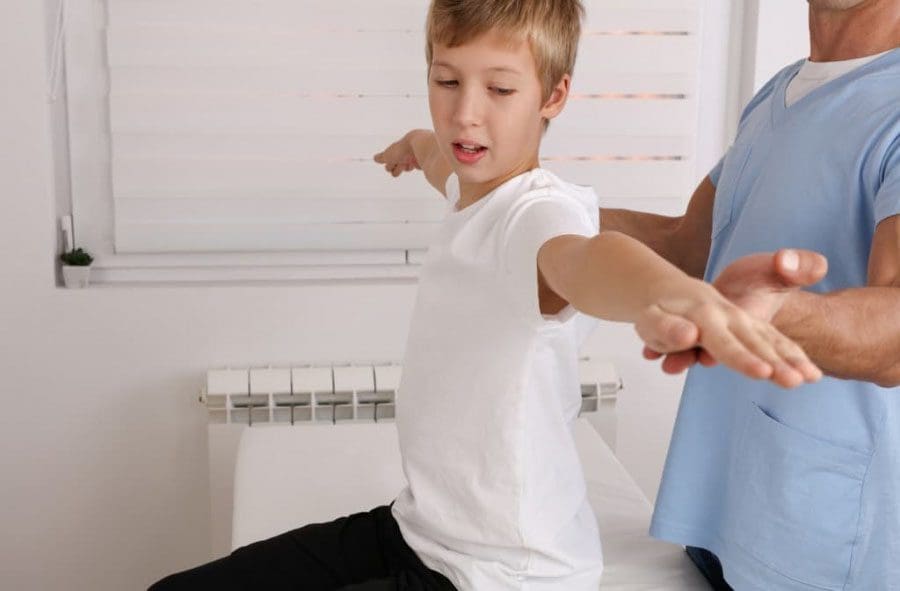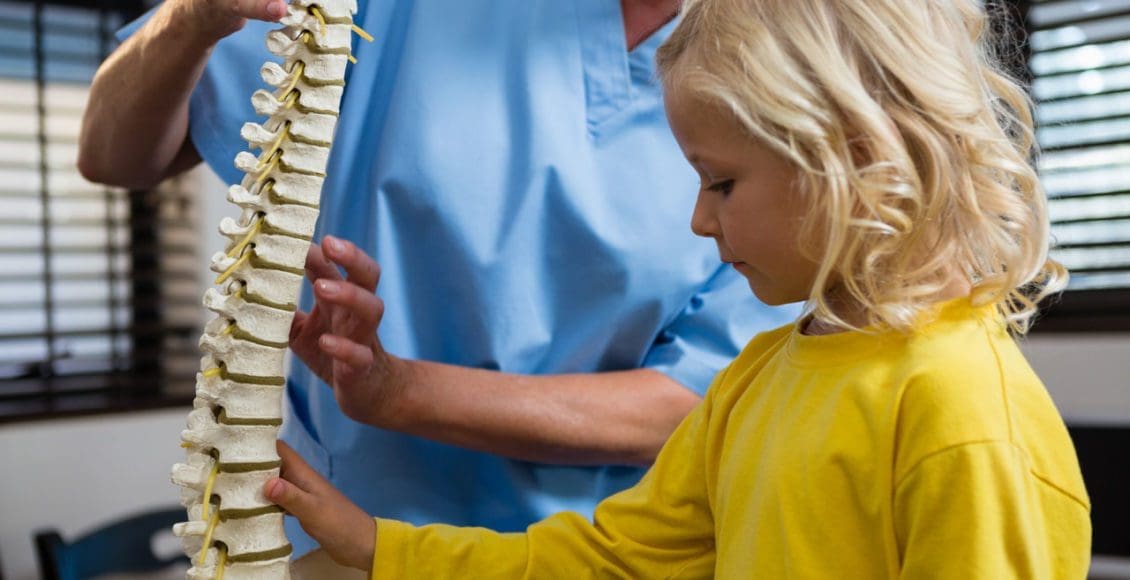Children and adolescents are experiencing back pain. Why it happens, and how parents can help prevent it is the objective. When thinking of back pain the image is typically a man or woman, hunched over grabbing their backs and wincing in pain. However, back pain in children and adolescents is not that uncommon.
According to a 2020 study published in Spine, around thirty-four percent of children report having back pain, with almost nine percent experiencing severe back pain. By the time they are fifteen, 20 to 70% of children will have experienced back pain at some point. Developing chronic back pain increases with age and is more common in girls.

The study found those that sought out early treatment, physical therapy, and chiropractic being the most prescribed lessened the need for more invasive treatments, like spinal injections, and surgery. Back pain can have a major impact on an adult’s life, and more so on a child. Prevention and treatment are important to help restore overall health and wellness.
Table of Contents
Signs and Symptoms
Symptoms can vary, the most common:
- Pain increases with movement, like bending or twisting
- Increased pain after sitting or standing for an extended period
- Sore and tender muscles around the spine
- Tight muscles
- Muscle spasms
Most back pain in children is mild. However, there are times when the child will require medical attention. A child should see a doctor if back pain persists for more than two or three days, if there is a fever, or if there is any numbness or weakness in the arms and legs.
Common Causes
Like adults, muscle sprains and strains are the most common cause of back pain. Strains are more common in the low back than around the neck or middle back and usually occur from overuse injuries, poor posture, poor body mechanics, and falls. Other common causes include:
- Weak core
- Overweight/obesity
- Muscle weakness and stiffness
- A sedentary lifestyle, not enough activity
- Sitting and slouching in front of the computer for too long
- Carrying an overloaded backpack

Spinal Conditions
Recreational and sports activities with injuries sustained are the most common causes of developing back pain. However, back pain can be brought on by underlying health and spine-related conditions. About a third of adolescents with low back pain could have a spinal condition. The most common conditions include:
Idiopathic Scoliosis
This is an abnormal curvature of the spine. This is usually not a painful condition. Some curvatures can be severe enough to cause pain and require medical care. Scoliosis can include the middle, low spine, or the entire spine. It is most common in adolescents 11-17 years of age. Symptoms include:
- Tilted shoulders
- Uneven hip bones
- One side of the ribs projects out more than the other
Scheuermann’s kyphosis
This is a growth disorder of the vertebrae. It happens when the front of the spine does not grow as fast as the back of the spine. This can produce a humpback curvature. The spine bends forward but the child cannot stand up straight. Usually, it happens during accelerated growth periods.
Spondylolysis
The vertebrae can break in children and kids that do repetitive exercises involving bending and twisting. Sports like gymnastics and football create a heightened risk for spondylolysis. It usually affects the low back and presents with non-stop low back pain. The most common treatment is rest. Other causes include:
- Spinal cord tumors
- Sickle cell anemia
- Infection
Tumors and infections are highly uncommon in children. They often present with pain and fever. If the nerves are pinched numbness, tingling, and weakness in the extremities can develop.
Common Treatments
Back pain in children is usually a short experience and can be treated with ice, rest, and over-the-counter medications like acetaminophen for children and nonsteroidal anti-inflammatory drugs like ibuprofen. A playing/exercise program can significantly help reduce child back pain.
However, there could be a need to modify the activity, so as to not worsen the injury or create new injury/s. The activities could be made to be lighter or a brace could be utilized. A specialist like a chiropractor/physical therapist can provide treatment, along with exercises, stretches, and lifestyle changes that will help reduce the pain. Complementary therapies like massage and acupuncture can enhance the child’s healing/recovery time and knock out the pain quickly.

Parental Prevention
Proper posture can and will prevent back pain. Children’s and adolescents’ musculoskeletal structures continue to develop at this stage. Therefore, sitting, standing, and lifting properly is paramount to preventing back pain. Along with this is avoiding activities that place repeated strain on the spine. An example is an overexertion while playing sports. Tips for keeping kids back-pain free:
- Avoid activities that generate repeated strain on the same muscles
- Stretching breaks need to be incorporated when sitting for a long time
- Limit sedentary activities
- Teach proper posture
- No slouching
- As much as possible make the home a stress-free environment
- Maintain a healthy weight and diet with balanced meals and snacks
- Help promote overall mental and physical health
Children and kids that are stressed out or depressed have a greater risk of developing back pain. Encourage the kids to stay active, get proper sleep, stretch out, and eat foods that are healthy for the spine. If back pain is presenting, a customized treatment plan along with lifestyle changes will get the child back to their favorite activities.
Chiropractic Care for Lower Back Injury
Dr. Alex Jimenez’s Blog Post Disclaimer
The scope of our information is limited to chiropractic, musculoskeletal, physical medicines, wellness, and sensitive health issues and/or functional medicine articles, topics, and discussions. We use functional health & wellness protocols to treat and support care for injuries or disorders of the musculoskeletal system. Our posts, topics, subjects, and insights cover clinical matters, issues, and topics that relate and support directly or indirectly our clinical scope of practice.*
Our office has made a reasonable attempt to provide supportive citations and has identified the relevant research study or studies supporting our posts. We also make copies of supporting research studies available to the board and or the public upon request. We understand that we cover matters that require an additional explanation as to how it may assist in a particular care plan or treatment protocol; therefore, to further discuss the subject matter above, please feel free to ask Dr. Alex Jimenez or contact us at 915-850-0900. The provider(s) Licensed in Texas& New Mexico*
Post Disclaimer
Professional Scope of Practice *
The information on this blog site is not intended to replace a one-on-one relationship with a qualified healthcare professional or licensed physician and is not medical advice. We encourage you to make healthcare decisions based on your research and partnership with a qualified healthcare professional.
Blog Information & Scope Discussions
Welcome to El Paso's Premier Wellness and Injury Care Clinic & Wellness Blog, where Dr. Alex Jimenez, DC, FNP-C, a board-certified Family Practice Nurse Practitioner (FNP-BC) and Chiropractor (DC), presents insights on how our team is dedicated to holistic healing and personalized care. Our practice aligns with evidence-based treatment protocols inspired by integrative medicine principles, similar to those found on this site and our family practice-based chiromed.com site, focusing on restoring health naturally for patients of all ages.
Our areas of chiropractic practice include Wellness & Nutrition, Chronic Pain, Personal Injury, Auto Accident Care, Work Injuries, Back Injury, Low Back Pain, Neck Pain, Migraine Headaches, Sports Injuries, Severe Sciatica, Scoliosis, Complex Herniated Discs, Fibromyalgia, Chronic Pain, Complex Injuries, Stress Management, Functional Medicine Treatments, and in-scope care protocols.
Our information scope is limited to chiropractic, musculoskeletal, physical medicine, wellness, contributing etiological viscerosomatic disturbances within clinical presentations, associated somato-visceral reflex clinical dynamics, subluxation complexes, sensitive health issues, and functional medicine articles, topics, and discussions.
We provide and present clinical collaboration with specialists from various disciplines. Each specialist is governed by their professional scope of practice and their jurisdiction of licensure. We use functional health & wellness protocols to treat and support care for the injuries or disorders of the musculoskeletal system.
Our videos, posts, topics, subjects, and insights cover clinical matters and issues that relate to and directly or indirectly support our clinical scope of practice.*
Our office has made a reasonable effort to provide supportive citations and has identified relevant research studies that support our posts. We provide copies of supporting research studies available to regulatory boards and the public upon request.
We understand that we cover matters that require an additional explanation of how they may assist in a particular care plan or treatment protocol; therefore, to discuss the subject matter above further, please feel free to ask Dr. Alex Jimenez, DC, APRN, FNP-BC, or contact us at 915-850-0900.
We are here to help you and your family.
Blessings
Dr. Alex Jimenez DC, MSACP, APRN, FNP-BC*, CCST, IFMCP, CFMP, ATN
email: coach@elpasofunctionalmedicine.com
Licensed as a Doctor of Chiropractic (DC) in Texas & New Mexico*
Texas DC License # TX5807
New Mexico DC License # NM-DC2182
Licensed as a Registered Nurse (RN*) in Texas & Multistate
Texas RN License # 1191402
ANCC FNP-BC: Board Certified Nurse Practitioner*
Compact Status: Multi-State License: Authorized to Practice in 40 States*
Graduate with Honors: ICHS: MSN-FNP (Family Nurse Practitioner Program)
Degree Granted. Master's in Family Practice MSN Diploma (Cum Laude)
Dr. Alex Jimenez, DC, APRN, FNP-BC*, CFMP, IFMCP, ATN, CCST
My Digital Business Card


